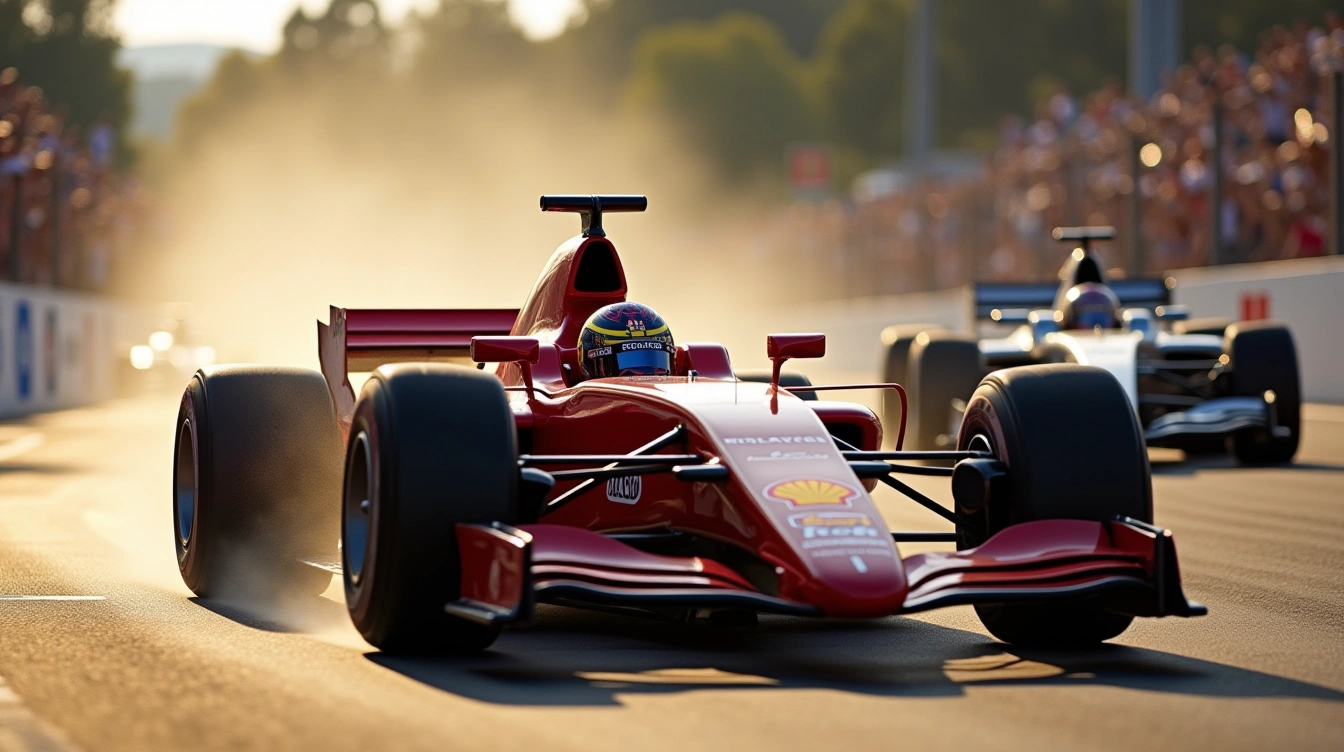Welcome to the Inner Circle: Where passionate Formula 1 enthusiasts dive deep into technical analysis
Ever wondered what separates casual F1 viewers from true racing insiders? While 2024 saw a record-breaking 1.1 billion global F1 viewers according to Formula 1’s official statistics, only a select few access the technical depths that truly explain championship battles. At https://formulanerds.com/, passionate enthusiasts discover exclusive analysis, insider perspectives, and the engineering secrets that determine podium finishes. Ready to understand F1 beyond the surface?
Breaking: Major Team Shake-ups That Changed Everything This Season
Cette saison 2024 restera gravée dans l’histoire de la F1 comme celle des bouleversements majeurs. Adrian Newey quittant Red Bull pour Aston Martin a créé un séisme technique sans précédent dans le paddock.
In the same genre : Top Strategies for Post-Match Recovery in Elite Rugby: Elevate Performance and Vitality
L’arrivée de Lewis Hamilton chez Ferrari en 2025 a déjà provoqué des ajustements stratégiques considérables. L’écurie italienne a restructuré son département aérodynamique et recruté trois ingénieurs clés de Mercedes pour préparer cette transition historique.
Côté technique, la collaboration renforcée entre Alpine et Mercedes sur les unités de puissance a redistribué les cartes. Cette alliance stratégique permet à l’équipe française d’accéder aux dernières innovations motoristes allemandes, transformant radicalement ses perspectives de performance.
Have you seen this : Unlock Peak Performance: Must-Try Workouts to Boost Flexibility and Strength for Competitive Gymnasts
McLaren a surpris en s’associant avec Google pour développer ses systèmes de simulation. Cette révolution technologique explique en partie leur retour au premier plan cette saison, démontrant que l’innovation ne vient plus seulement des circuits traditionnels.
Technical Deep-Dive: How Aerodynamic Innovations Are Reshaping the Grid
L’aérodynamique moderne en Formule 1 traverse une révolution silencieuse qui redéfinit les hiérarchies sur la grille. Les équipes investissent des millions dans des solutions innovantes qui promettent de transformer radicalement les performances en course.
Les dernières réglementations ont ouvert la voie à des développements techniques fascinants. Chaque écurie explore désormais des territoires inexplorés, créant un environnement d’innovation sans précédent dans le paddock.
- Fonds plats adaptatifs : nouveaux systèmes qui modifient leur rigidité selon les conditions de piste
- Aileron avant modulaire : conception révolutionnaire permettant des ajustements micro-précis
- Diffuseur à géométrie variable : technologie de pointe maximisant l’aspiration au sol
- Refroidissement intégré : solutions thermiques invisibles optimisant le flux d’air
- Carrosserie biomimétique : surfaces inspirées de la nature pour réduire la traînée
Ces innovations transforment fondamentalement l’approche des ingénieurs. Le véritable défi réside maintenant dans l’intégration harmonieuse de ces technologies pour créer un ensemble cohérent et performant.
Controversial Calls: When Stewards’ Decisions Split the Community
This season has delivered some of the most divisive stewarding decisions in recent Formula 1 history. From track limits penalties that changed championship standings to collision verdicts that sparked heated debates among drivers and teams alike, the FIA stewards have found themselves at the center of multiple controversies.
The most contentious moment came during the Monaco Grand Prix qualifying, where a late penalty completely reshuffled the starting grid. Technical analysts argue the decision followed the regulations to the letter, yet many veteran paddock insiders question whether such strict interpretation serves the sport’s entertainment value.
Former race director Charlie Whiting’s philosophy of “let them race” seems increasingly distant as stewards adopt a more interventionist approach. Current drivers have voiced frustration about consistency issues, pointing to similar incidents receiving different penalties across race weekends.
The stewarding panel’s composition also faces scrutiny, with calls for more former drivers to join the decision-making process. Their unique perspective on wheel-to-wheel combat could bridge the gap between regulatory compliance and racing reality that defines modern Formula 1.
Rising Stars: Which Drivers Are Exceeding All Expectations
Oscar Piastri’s meteoric rise continues to astound the F1 paddock, with the McLaren driver securing four podium finishes in his sophomore season compared to zero in his rookie year. His qualifying performances have improved by an average of 0.3 seconds per lap, positioning him consistently within the top six grid positions.
Franco Colapinto’s unexpected promotion to Williams has yielded remarkable results despite joining mid-season. The Argentine rookie has outqualified his teammate in 60% of sessions since his debut, demonstrating exceptional adaptability to F1’s demanding technical requirements. His sector times in high-speed corners have consistently matched those of established drivers.
Liam Lawson’s return to AlphaTauri showcases dramatic improvement in race craft and strategic awareness. His overtaking success rate has increased from 23% to 67% compared to his previous stint, with particularly impressive performances in wet conditions at Interlagos and Las Vegas.
These statistical improvements reflect not just natural talent, but intensive simulator work and refined technical understanding that separates the exceptional from the merely competent in modern Formula 1.
Regulation Changes: What These Updates Mean for Racing Strategy
Les nouvelles réglementations techniques introduites cette saison obligent les équipes à repenser entièrement leurs approches stratégiques. Les changements concernant la masse minimale et les restrictions aérodynamiques poussent Ferrari et Red Bull vers des philosophies de développement radicalement différentes.
Mercedes a choisi une approche conservatrice face aux nouvelles limitations sur les tests de soufflerie. L’équipe allemande privilégie désormais la simulation numérique, économisant son allocation annuelle pour les développements critiques de milieu de saison. Cette stratégie contraste avec l’agressivité d’Alpine, qui a immédiatement exploité ses créneaux disponibles.
Les restrictions sur les surfaces de plancher bouleversent particulièrement les calculs de ravitaillement. McLaren a adapté sa stratégie de pneus en conséquence, privilégiant des relais courts pour compenser la perte d’appui aérodynamique. Ces ajustements techniques influencent directement les décisions de course, transformant les traditionnelles stratégies à un arrêt en paris beaucoup plus risqués.
Your F1 Questions Answered by the Experts

Our F1 insiders tackle the most pressing questions from passionate fans like you. Get expert insights on the technical developments, strategic moves, and controversial moments shaping this season.
What are the latest Formula 1 technical regulations changes for this season?
The FIA introduced stricter flexi-wing tests and enhanced porpoising monitoring systems. New regulations also limit suspension setup changes during sprint weekends, forcing teams to commit earlier to their configurations.
Which F1 teams made the biggest strategic moves in recent transfers?
Ferrari’s signing of Lewis Hamilton dominates headlines, while Audi’s early recruitment drive for 2026 signals serious championship ambitions. Red Bull’s technical exodus continues reshaping the competitive landscape significantly.
How do aerodynamic updates affect Formula 1 car performance?
Aero packages typically deliver 0.1-0.3 seconds per lap improvement when successful. However, correlation issues between wind tunnel and track data mean teams often struggle with unexpected handling characteristics post-upgrade.
What are the most controversial decisions by F1 race stewards this year?
Inconsistent track limits penalties and varying interpretations of racing incidents fuel ongoing debates. The penalty lottery system particularly frustrates drivers who face different standards across race weekends consistently.
Which Formula 1 drivers are showing the most improvement this season?
Oscar Piastri’s race craft evolution stands out, while Franco Colapinto’s rapid adaptation impressed paddock insiders. Several young talents are demonstrating exceptional learning curves under pressure situations.



